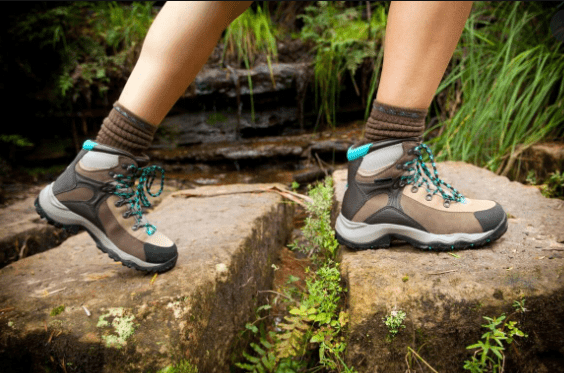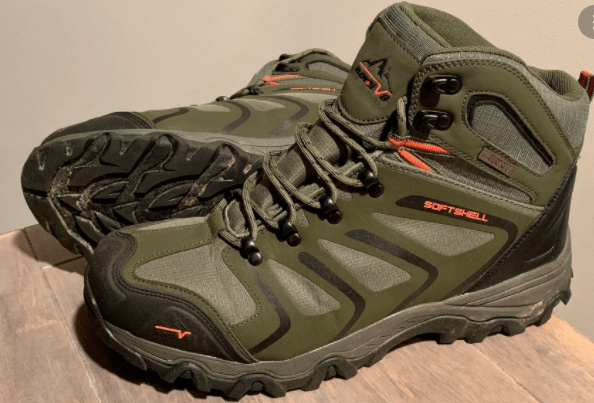For your hiking adventure to be enjoyable, you must have the best hiking boots. With a good pair of hiking boots, you can tackle any trail. However, to have the best hiking experience, you must perfectly break in the hiking boots. There are different hiking boots in the market, and they have different break-in times. Brand new boots have a generic insole, stiff sole, and stiff upper.
The boot won’t flex or move as your foot does, meaning there will be loose points and friction points that lead to blisters and soreness. Heading straight for the mountains and hills in a new pair of boots will lead to discomfort and trouble. So, you need to break in your new hiking boots.
Many soft synthetic and light boots may feel comfortable immediately, but don’t be fooled because they have hot spots, and breaking them will help.
7 Hacks that Will Help you Break in your New Hiking Boots
Below are our best tips for how to break in hiking boots perfectly:
1. Be Careful When Shopping for the Boots
When shopping for your hiking boots, purchase boots that fit you comfortably. Most synthetic boots feel comfier straight from the box, and they will give the best comfort level when you break them in well.
While leather boots can be uncomfortable when new, they shape your foot better than synthetic boots. So, before making your purchase, you must know what you want. Check out our guide with the Top 5 Best Hiking Shoes and a Detailed Buyer’s Guide.
2. Wear the Boots Around the House
After purchasing your hiking boots, wear them around the house so that your feet can get used to them. Here are some tips to follow:
Wear the boots inside the house
Wear the socks and insoles you intend to wear during the hike and move around the house. You can wear the boots while watching TV, for dinner, or doing chores, like cleaning. The gussets and tongues should be straight. At first, the boots will feel stiff, which is fine.
Walk around the neighborhood
Before you up the distance, it is good to walk around the neighborhood while wearing the boots to make sure they feel great at each stage. Try walking on challenging surfaces to see if they can hold up.
As you walk around with your new boots, the sole will flex, the upper will creasing behind the toes, and the around the ankle. If you feel you have bought the wrong size, you can return the boots if you have not worn them outside.
3. Work the Leather
The leather found in most hiking boots, mostly full-grain leather, takes longer to soften. Luckily, with manipulation and wax, the leather will soften faster. You can use your fingers to work into the flexion on the ankle and behind the toes. Remember to soften the soles by grabbing the boots and flexing them with both hands. This will soften the sole and prevent the heel from lifting.
4. Take Short Walks
Wearing the shoes around the house will help soften the boots, but continuous walking creates a different movement pattern. For better breaking in your boots, wear the boots when going to shop or when taking a walk in the park.
Furthermore, this offers you a chance to test different lacing styles. When choosing a style, use the one that provides enough contact, comfort, and stability. After taking multiple walks in your new hiking boots, your boots will have flexed and softened to your movement pattern.
5. Tape Up the Hostpots
When breaking in new hiking boots, it is normal to get blisters. During your walks, you can get blisters on top of the big toes, heel, and outside the big toe. Use sports tape or surgical tape to reduce the rubbing against the skin. Here are some tips that can help you avoid blisters when breaking in new hiking boots.
- Pay attention to how your feet feel. As soon as your feet hurt, try re-tying the laces and tape down the hotspot with surgical or sports tape.
- Wear moisture-wicking socks, thick socks, and merino wool socks. The socks should fit comfortably, and they should be flexible.
- When making a stop, take your shoes, let the feet breath for some minutes, and look for any forming blisters.
- If the socks get wet, change to a dry pair.
6. Go for Longer Walks with the Boots

Before you decide to go for longer walks, you must have tape-up the hotspots and felt the boots are comfortable. You can go for a long walk without forming blisters or feeling discomfort. After some walks, the boots will soften and mold around the hotspots, and you won’t have to tape the hotspots anymore.
7. Don’t Rush
Taking shortcuts when breaking in your new hiking boots will cause problems. Avoid soaking the boots and walking for long distances. Walking for long stretches in new boots will cause blisters not unless you are lucky with the new boots.
Avoid putting the boots in the freezer and heating them with hairdryers, which will melt the glue. Instead, take your time and follow the breaking process. It will be worth it.
Bottom Line
There is no easy solution to breaking in new hiking boots. Fortunately, there is a quick way for hikers who want to get blisters and sacrifice the lifespan of their new pair of hiking boots. If you have ample time before your next hike, perfectly break in your new hiking boots within 1 to 4 weeks.
